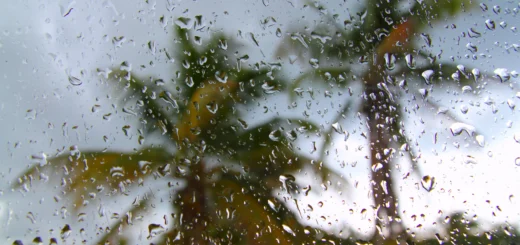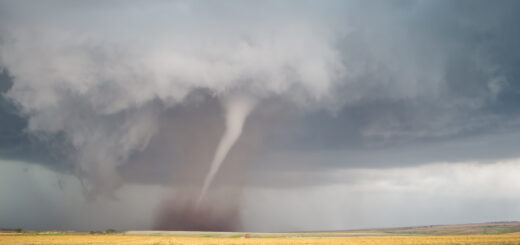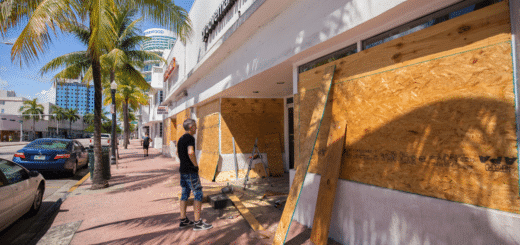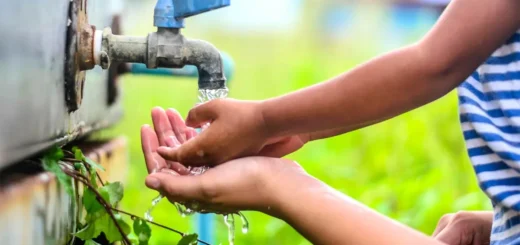Emergency Flood Preparedness: How to Safeguard Your Home and Family
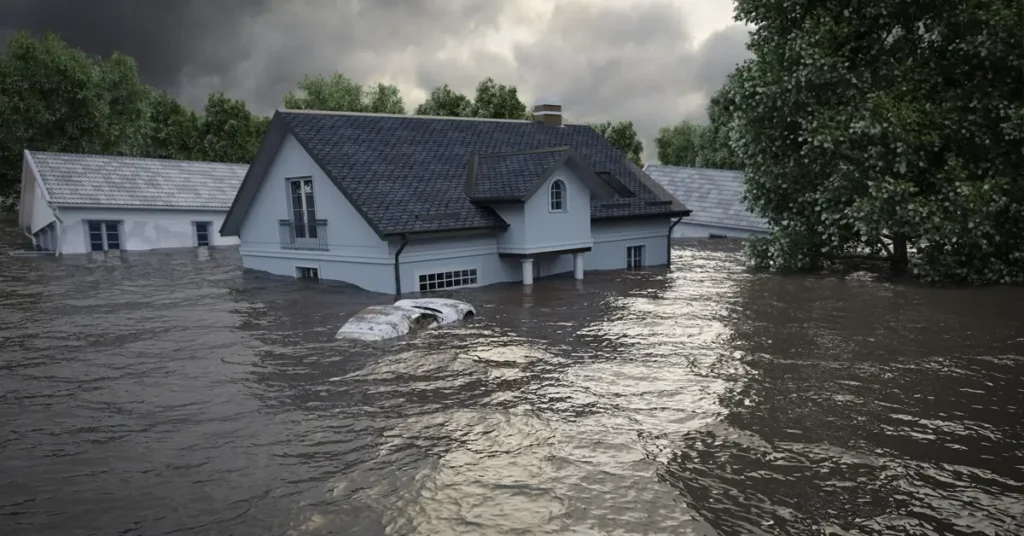
Flood preparedness holds immense significance in the Southeastern US when it comes to protecting your home and ensuring the safety of your family.
In the face of a potential flood, being proactive and well-prepared can make all the difference. By understanding the importance of flood preparedness, you can take crucial steps to minimize the risks and potential damages associated with flooding.
From creating an emergency plan to implementing preventive measures, being prepared empowers you to face a flood situation with confidence and resilience.
In this Southern Prepper mega thread on Emergency Flood Preparedness, we will delve into the reasons why flood preparedness is paramount and how it can safeguard your home and family. So, let’s explore the importance of flood preparedness and equip ourselves with the knowledge and tools necessary to navigate this widespread natural disaster.
Table of Contents
Understanding the Risks
To effectively protect your home and family from the potential dangers of flooding, it is crucial to have a comprehensive understanding of the risks involved. By familiarizing yourself with the factors that contribute to flooding and assessing the vulnerability of your property, you can make informed decisions and take necessary precautions. In this section, we will delve into the key aspects of understanding the risks associated with flooding.
Identifying flood-prone areas and flood zones
Identifying flood-prone areas and understanding flood zones is a fundamental step in comprehending flood risks.
Flood zones are designated geographic areas based on their susceptibility to flooding, as determined by organizations like FEMA and local authorities.
Consulting flood zone maps can help you determine the level of risk your property faces.
Even if you don’t reside in a high-risk flood zone, localized factors like heavy rainfall or inadequate drainage systems can still make your property susceptible to flooding.
Learning about local weather patterns and historical flooding incidents
Gaining knowledge about local weather patterns and historical flooding incidents provides valuable insights.
Researching the frequency and severity of past floods helps you understand the potential risks and make informed decisions about flood preparedness.
Local authorities and meteorological agencies often provide information and resources related to historical flooding, aiding in your assessment of vulnerability.
Assessing the vulnerability of your home to flooding
When it comes to assessing the vulnerability of your home to flooding, it’s important to take a serious look at things. Flooding can be a real headache, so let’s tackle it head-on.
Start by surveying your surroundings. Are you in a low-lying area or near any bodies of water? These factors can increase the risk of flooding. Take note of any potential red flags.
Next, give your home a thorough inspection. Check the foundation, windows, and doors for any signs of water seepage or poor drainage. Fixing these issues can help keep the water out and protect your home.
Don’t forget to get familiar with your local flood zones and weather patterns. It’s always good to know what you’re up against.
By being proactive and addressing these vulnerabilities, you’ll be better prepared for any potential flooding. So, take a moment to assess your home and make those necessary improvements. Trust me, it’s worth it in the long run!
Creating an Emergency Plan
In the face of a potential flood, having a well-developed emergency plan is crucial to ensure the safety and well-being of your family. By creating a comprehensive emergency plan, you can effectively respond to a flood situation and minimize the risks involved.
Let’s explore the steps to take when developing an emergency plan for your home and family.
1. Establish Clear Communication Channels
– Designate a primary point of contact for your family.
– Exchange contact information and ensure everyone has emergency phone numbers.
– Utilize text messaging or a group chat app for instant communication.
– Establish a communication plan with trusted neighbors or relatives.
2. Assign Roles and Responsibilities
– Determine specific tasks for each family member during a flood.
– Assign someone to shut off utilities if necessary.
– Identify who will gather emergency supplies and assist vulnerable family members.
– Consider everyone’s capabilities and limitations when assigning tasks.
3. Prepare an Emergency Kit
– Gather essential supplies to sustain your family for at least 72 hours.
– Include non-perishable food, water, medications, a first aid kit, flashlights, batteries, blankets, and personal hygiene products.
– Customize the kit to meet the needs of infants, elderly individuals, or individuals with special medical conditions.
– Store the emergency kit in an easily accessible location and regularly check and replenish its contents.
4. Designate a Meeting Point
– Choose a safe location outside the flood-prone area where your family can gather.
– Ensure everyone knows the designated meeting point.
– Consider alternative meeting points in case the primary one is inaccessible.
– Establish a plan for reuniting if family members get separated during an evacuation.
5. Regularly Review and Practice
– Review and update your emergency plan as needed.
– Conduct regular practice drills with your family.
– Familiarize everyone with evacuation routes and emergency procedures.
– Practice different scenarios to ensure readiness and confidence.
By creating a well-thought-out emergency plan, including clear communication channels, assigned roles and responsibilities, an emergency kit, and designated meeting points, you can significantly enhance your family’s preparedness for a flood situation.
Regular reviews and practice drills will further strengthen your response capabilities. In the next section, we will explore practical measures to protect your home from flooding.
Protecting Your Home
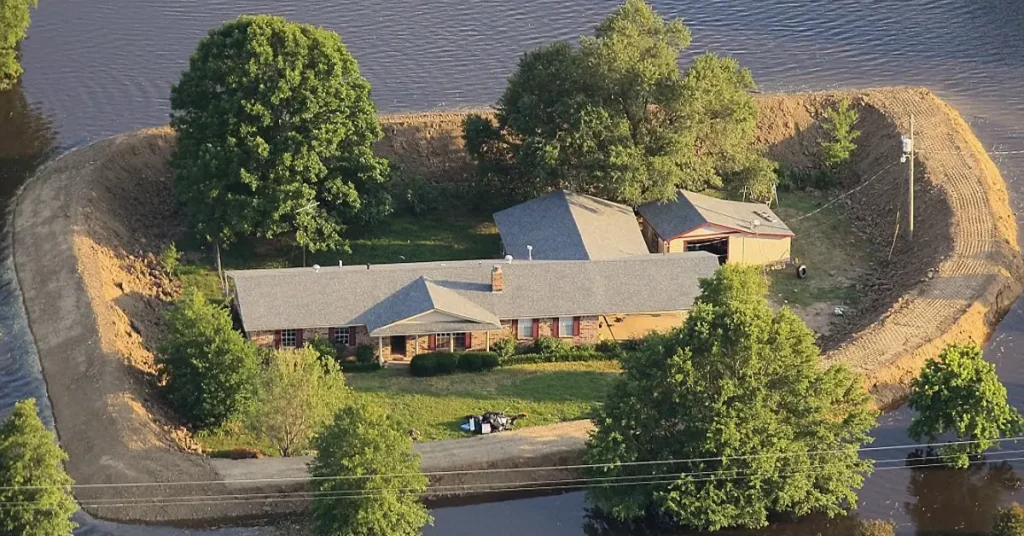
When it comes to protecting your home from a flood, a little preparation goes a long way. While you probably won’t be able to build a berm around your home, don’t worry, flood preparation doesn’t have to be a daunting task.
With a few steps, you can safeguard your home and minimize the risk of flood damage.
1. Elevate Essential Utilities and Appliances
Flooding can cause significant damage to electrical systems, heating equipment, and appliances. Elevating these essential utilities above flood level can help prevent costly repairs and minimize potential hazards.
Consider raising electrical outlets, switches, and wiring at least a foot above the projected flood level. Similarly, elevate furnaces, water heaters, and other major appliances to a higher level, such as the attic or a raised platform.
2. Install Flood-resistant Barriers
Flood-resistant barriers and sandbags are effective tools in protecting your home from rising waters. Consider installing flood-resistant doors, windows, and barriers around entry points.
These barriers are designed to withstand the force of floodwaters and prevent their intrusion. Additionally, consider adding flood-resistant seals or caulking around doors and windows to further reduce the risk of water seepage.
3. Ensure Proper Drainage Systems
Adequate drainage is essential to divert water away from your home and prevent water accumulation that can lead to flooding. Clean and maintain gutters, downspouts, and drains regularly to ensure they are free from debris and functioning properly.
Consider installing additional drainage systems, such as French drains or sump pumps, to redirect water away from your property.
Take a look at your landscaping. Planting native, flood-resistant plants can help absorb excess water and stabilize the soil. Grade the landscape around your home to create a gentle slope away from the foundation, promoting efficient water runoff.
4. Seal Vulnerable Points of Entry
Preventing water from entering your home is crucial in flood protection. Seal any cracks or openings in the foundation walls, floors, and windows using waterproof sealants or coatings.
Apply weather stripping to doors and windows to create a tight seal and prevent water seepage. Consider installing backflow valves in plumbing fixtures to prevent sewage backup during flooding.
5. Protect Important Documents and Possessions
Safeguarding valuable documents, sentimental items, and possessions is integral to flood preparedness. Store important documents like insurance policies, identification papers, and personal records in waterproof containers or a safe deposit box. Keep sentimental items and valuables on higher shelves or in elevated storage areas. Consider digitizing essential documents and storing them securely in the cloud for easy access and backup.
By implementing these practical measures to protect your home, such as elevating utilities and appliances, installing flood-resistant barriers, ensuring proper drainage, sealing vulnerable points of entry, and safeguarding important documents and possessions, you can significantly reduce the impact of flooding on your property.
A proactive approach to flood protection is essential. In the next section, we will discuss what to do during and after a flood to ensure the safety and recovery of your home and family.
Securing Your Finances: Understanding Flood Insurance and Documentation
When it comes to protecting your home and financial well-being in the face of a flood, having the right insurance coverage and maintaining proper documentation is essential.
In this section, we will explore the importance of flood insurance, the documentation you should have in place, and the steps to take to ensure adequate financial protection.
The Importance of Flood Insurance
Flood insurance provides crucial financial protection against flood-related damages that may not be covered by standard homeowners’ insurance policies. If you live in a flood-prone area or even if you don’t, it’s important to purchase flood insurance to safeguard your home.
Flood insurance typically covers structural damages, repairs, and the replacement of damaged contents. Consult with your insurance company to assess your risk and determine the appropriate amount of coverage needed for your home.
Documenting Your Property
Keeping thorough documentation of your property and belongings is vital when it comes to filing insurance claims and ensuring a smoother recovery process.
Create a comprehensive inventory of your possessions, including descriptions, photographs, and estimated values. Store a copy of this inventory in a safe, off-site location, or consider using the cloud or a thumb drive to securely store the information.
This inventory will serve as evidence of your belongings and their condition prior to the flood.
Reviewing and Updating Insurance Policies
Regularly review your insurance policies, including both homeowners’ insurance and flood insurance, to ensure they adequately cover your property and belongings.
Understand the terms and coverage limits of your policies, including deductibles and exclusions. If you have made any significant improvements or renovations to your home, notify your insurance provider to ensure that your coverage reflects the updated value of your property.
Filing an Insurance Claim
In the unfortunate event of a flood, promptly contact your insurance provider to initiate the claims process. Provide them with all the necessary documentation, including your inventory, photographs, and any supporting evidence of damages.
Follow the instructions provided by your insurance company and be diligent in documenting the extent of the damages and any temporary repairs you make to prevent further harm. Keep records of all communication with your insurer throughout the claims process.
Working with Restoration Professionals
Dealing with the aftermath of a flood can be incredibly overwhelming. That’s why it’s important to know how to work with restoration professionals who can help you get back on your feet. These experts have the knowledge, experience, and tools to handle the challenges that come with flood damage.
First things first, it’s crucial to reach out to a reputable restoration company as soon as possible. They can assess the extent of the damage and provide guidance on the necessary steps to restore your home. Make sure to choose a company that is licensed, insured, and certified in water damage restoration.
When the restoration team arrives, be prepared to discuss the details of the flood, including any areas of concern or specific items that are valuable or sentimental to you. They will conduct a thorough inspection and create a customized plan to address the damage.
Throughout the process, communication is key. Stay in touch with the restoration professionals, ask questions, and provide any relevant updates or changes in your situation. Trust their expertise and follow their recommendations for the best outcome.
Remember, working with restoration professionals after a flood is a partnership. By collaborating closely with them, you can ensure that your home is restored efficiently and effectively. Stay positive, and know that you’re taking the necessary steps toward recovery.
Staying Alert: Early Warning Systems and Continuous Monitoring
When it comes to dealing with the threat of flooding, being aware and prepared in advance can make a significant difference in mitigating potential damages. In this section, we will explore the importance of early warning systems and continuous monitoring to stay informed about potential flood risks and take timely action to protect your home and family.
Early Warning Systems
Early warning systems provide timely information about potential flooding events. Stay informed about the available early warning systems in your area, such as local weather alerts, flood monitoring websites, or mobile applications.
Sign up for emergency flood notifications and alerts through your local government or relevant agencies to receive updates about severe weather conditions, flood watches, or warnings specific to your area.
Monitoring Weather Patterns
Monitoring weather patterns can provide valuable insights into potential flood risks. Stay informed about weather forecasts, especially during periods of heavy rainfall or when severe weather conditions are expected.
Pay attention to meteorological reports, local news, or weather apps to stay updated on any developments that may increase the likelihood of flooding in your region. Being aware of changing weather patterns allows you to take proactive measures in advance.
Monitoring River Levels and Flood Gauges
Monitoring river levels and flood gauges can provide real-time data on water levels in nearby rivers or streams, helping you assess the flood risk in your area.
Keep track of river levels through the NOAA official website or mobile applications provided by local authorities or relevant agencies.
Be familiar with the flood gauges in your vicinity and know the thresholds at which flooding becomes a concern. Regularly check these gauges during periods of heavy rain or when flood warnings are issued.
Utilizing Home Monitoring Systems
Home monitoring systems can enhance your flood preparedness by providing additional layers of protection. Consider installing flood sensors or water alarms in areas prone to water damage, such as plumbing fixtures, water heaters, and refrigerators.
These devices can detect water intrusion and alert you at the early stages of flooding, allowing you to take immediate action. Connect these sensors to your home security system or a mobile app to receive real-time notifications when water is detected.
Neighborhood Watch and Community Communication
Following and engaging with your Facebook neighborhood or community groups can foster a collaborative approach to flood monitoring and preparedness.
Stay connected with your neighbors. Share information about flood risks, weather updates, and emergency resources. By working together, you can enhance your collective awareness and support each other during challenging times.
By staying alert through early warning systems, monitoring weather patterns, river levels, and flood gauges, utilizing home monitoring systems, and fostering community communication, you can significantly enhance your ability to respond to flood risks effectively.
Being proactive and well-informed is key to staying ahead of potential flooding threats. In the next section, we will discuss essential actions to take during and after a flood to ensure the safety and recovery of your home and family.
Safety First: Developing an Effective Evacuation Plan
When facing an imminent flood threat, having a well-prepared evacuation plan is crucial for the safety and well-being of your family.
In this section, we will discuss the steps to develop an effective evacuation plan to ensure a smooth and organized evacuation process.
1. Identify Evacuation Routes
Familiarize yourself with the designated evacuation routes in your area. Contact local emergency management authorities or visit their websites to obtain information on the recommended evacuation routes specific to your community.
Identify primary and alternative routes to account for possible road closures or congestion during an evacuation.
2. Establish Meeting Points
Determine meeting points both within your neighborhood and outside the flood zone. In the event of an evacuation, it’s important to have predetermined locations where family members can reunite if separated.
Choose easily identifiable landmarks or safe areas away from flood-prone areas as your meeting points.
3. Prepare Emergency Supplies and Essential Documents
As part of your evacuation plan, assemble an emergency kit with essential supplies such as non-perishable food, water, medications, flashlights, batteries, and a first aid kit.
Gather important documents including identification papers, insurance policies, medical records, and contact information for emergency contacts. Keep these items in a waterproof and portable container for easy transport during evacuation.
4. Notify Family and Friends
Inform your close family members, friends, and neighbors about your evacuation plan. Share the details of your planned routes, meeting points, and emergency contact information.
By notifying others about your intentions, you can ensure they are aware of your whereabouts and can provide assistance if needed.
5. Plan for Pets and Livestock
If you have pets or livestock, include them in your evacuation plan. Identify pet-friendly shelters or boarding facilities in advance and have a plan for transporting your animals safely.
Prepare an emergency kit for your pets, including food, water, medications, leashes, and carriers.
Make sure identification tags are up to date and include contact information.
6. Stay Informed and Follow Authorities’ Instructions
During a flood event, stay informed about the latest updates and instructions from local authorities. Listen to emergency broadcasts, follow social media accounts of local agencies, and use weather alert apps for real-time information.
Comply with evacuation orders and directives from authorities to ensure your safety and the safety of others.
7. Practice the Evacuation Plan
Regularly practice your evacuation plan with your family to familiarize everyone with the procedures and routes. Conduct drills at different times of the day and consider simulating scenarios where certain family members may not be at home during an evacuation.
Practicing the plan will help ensure a smooth and efficient evacuation process when it is needed.
By identifying evacuation routes, establishing meeting points, preparing emergency supplies and essential documents, notifying family and friends, planning for pets and livestock, staying informed, and practicing the evacuation plan, you can better prepare for a potential flood evacuation and ensure the safety of your loved ones.
In the next section, we will discuss crucial actions to take during and after a flood to aid in the recovery process.
Stay Safe: Essential Steps to Take During a Flood
When faced with a flood, it’s crucial to prioritize your safety and take immediate action to protect yourself and your family.
In this section of our ultimate guide to flood preparedness,, we will discuss the essential steps to take during a flood to ensure your well-being and minimize potential risks.
Stay Informed
Keep yourself updated with the latest information about the flood situation. Listen to local emergency broadcasts, follow official social media accounts, and use weather apps for real-time updates. Pay attention to evacuation orders, road closures, and any additional instructions provided by authorities.
Move to Higher Ground
If instructed to evacuate or if you feel that your safety is compromised, move to higher ground immediately.
Avoid areas near rivers, streams, or underground spaces as they can be hazardous during a flood.
Seek higher floors in your home with windows or get on your roof – do not go into your attic! You could become trapped by the flood waters. While on your roof, wave a towel or sheet to be noticed from the air by rescuers.
Turn Off Utilities
Safely turn off your home’s utilities, including electricity, gas, and water. This precautionary step helps prevent electrical hazards, gas leaks, and water damage. If you’re unsure how to shut off these utilities, consult a professional or contact your utility providers for guidance.
Avoid Walking or Driving Through Floodwaters
Never attempt to walk or drive through floodwaters. The depth and strength of the water can be deceiving, and moving water can sweep away even heavy vehicles. Stay away from flooded areas and use designated evacuation routes or higher ground to navigate safely.
Use Emergency Equipment
If you find yourself in immediate danger and need to be rescued, use any available emergency equipment, such as life jackets, flotation devices, or ropes. Signal for help by using whistles, flashlights, or waving bright-colored objects to attract the attention of rescuers.
Stay Connected
Maintain communication with your family, friends, and emergency services. Use your mobile phone to provide updates on your situation, inform others of your location, and seek assistance if needed. Keep your phone charged and have a backup power source available.
Follow Safety Guidelines
Adhere to safety guidelines and recommendations provided by authorities during a flood. Avoid contact with floodwater, as it may be contaminated and pose health risks.
Be cautious of potential hazards such as downed power lines, debris, or wildlife that may have been displaced by the flood.
Be Prepared for Power Outages
During a flood, power outages are common. Have a supply of batteries, flashlights, and alternative lighting sources readily available. Avoid using candles as they can increase the risk of fire. Use battery-powered or hand-cranked radios to stay updated on the situation.
You and your family’s safety is the top priority during a flood. By staying informed, moving to higher ground, turning off utilities, avoiding floodwaters, using emergency equipment when necessary, staying connected, following safety guidelines, and being prepared for power outages, you can navigate through the challenges of a flood and protect yourself and your loved ones.
In the next section, we will discuss essential steps to take after a flood to begin the recovery process.
Recovery and Restoration: 9 Essential Steps to Take After a Flood
Once the floodwaters have receded, it’s important to begin the recovery process promptly.
In this section of our ultimate guide to flood preparedness, we will discuss the essential steps to take after a flood to ensure the safety of your home, assess damages, and restore your living environment.
Wait for Clearance
You’ll want to get home as soon as possible, but before returning or re-entering your home, be patient and wait for authorities to give clearance that it is safe to do so.
Floodwaters can weaken structures and pose other hazards. Follow their instructions and guidance to ensure your safety during the assessment and cleanup process.
Assess Safety Hazards
Once you enter your home, be cautious of potential safety hazards. Check for any structural damages, such as cracks, sagging floors, or leaning walls, that may make the building or your home unstable.
Watch for electrical hazards, such as exposed wires or damaged electrical systems, and avoid contact with standing water as it may be electrically charged.
Document Damages
Document the damages to your property by taking photographs and videos. Your documentation will be essential for insurance claims and can serve as evidence of the extent of the flood damage.
Make a detailed inventory of damaged items, including furniture, appliances, and personal belongings.
Contact Your Insurance Provider
Notify your insurance provider about the flood damage as soon as possible. Follow their instructions regarding filing a claim and provide them with the necessary documentation and evidence.
Take note of any deadlines or specific requirements they may have.
Mitigate Further Damage
If your home floods, keep in mind that the amount of damage done to your state or community, you could be looking at several months of waiting before your home can be repaired by professionals.
Take immediate steps to mitigate further damage to your property. This may include removing standing water, pulling up carpet, tearing out drywall and insulation, using fans to out the affected areas, and cleaning up debris.
Get started on clean-up as soon as you can to prevent mold growth and additional structural damage. Cut off your power before you start the cleanup. Get your friends and neighbors to help.
Seek Professional Assistance
Get a FEMA number by calling 800-621-3362 (711 or Video Relay Service Available). Call FEMA and give them all the info you have. Do this asap! Keep your FEMA number and all of your documentation together.
Contact your local relief programs such as churches and other organizations that can help you with food, clothes, toiletries, and medications.
Engage the services of professionals, such as water damage restoration companies or contractors, to assist with the cleanup and restoration process. They have the expertise, equipment, and knowledge to handle flood damage effectively and efficiently.
Dispose of Contaminated Materials
If floodwaters have contaminated your home, be cautious when handling materials that may pose health risks.
Dispose of items that cannot be effectively cleaned, such as mattresses, carpets, and upholstered furniture. Follow local regulations and guidelines for proper disposal methods.
Restore, Repair & Think About The Future
Once the initial cleanup is complete, focus on restoring and repairing your home.
Work with qualified professionals to address structural damages, electrical systems, plumbing, and any other necessary repairs. Get license copies from all contractors who will be doing work on your home, research their business history, and make sure they are who they say they are.
While having your home flooded is never what any homeowner wants, this is a prime opportunity to make improvements to your home. If you have had major flooding, your home will most likely be stripped down to the studs, it’s a good time to add or move outlets, change where cables are run, or add an addition.
Prioritize Personal Well-being
Going through a flood can be emotionally and physically draining. Take care of your well-being and that of your family members. Seek support from friends, family, or professional counselors if needed.
Stay hydrated, get enough rest, and practice self-care during the recovery process.
By following these essential steps, you can begin the recovery process after a flood and restore your home to a safe and habitable condition.
Prioritize safety, document damages, contact your insurance provider, mitigate further damage, seek professional assistance, dispose of contaminated materials properly, restore and repair, and prioritize your well-being.
In the final section, we will recap the key points discussed in this article and emphasize the importance of being prepared for future floods.
Coming Together: Community Support and Available Resources After a Flood
Recovering from a flood can be a challenging process, but you don’t have to face it alone.
In this section of our ultimate guide to flood preparedness, we will explore the importance of community support and highlight the resources available to assist you in the aftermath of a flood.
Local Emergency Services
Contact your local emergency services or disaster management agencies to inquire about available resources and support. They can provide information on shelters, food assistance programs, and other immediate needs for those affected by the flood.
Community Organizations and Nonprofits
Reach out to local community organizations and nonprofits that specialize in disaster relief and recovery. These organizations often offer support services, such as temporary housing, food banks, and counseling, to help individuals and families in need.
Government Assistance Programs
Check with your local government or relevant agencies for assistance programs designed to aid flood victims. These programs may provide financial aid, low-interest loans, or grants to help with home repairs, replacement of essential items, or relocation expenses.
Volunteer and Relief Efforts
Many communities come together during times of crisis to support those affected by natural disasters. Take advantage of volunteer and relief efforts in your area. These initiatives can provide manpower, resources, and emotional support to help you in the recovery process.
Community Support Groups
Seek out community support groups or online forums where you can connect with others who have experienced similar situations. These groups can provide valuable advice, resources, and emotional support as you navigate the challenges of post-flood recovery.
Local Health Services
Floods can have a significant impact on physical and mental health. Contact local health services to access medical care, counseling services, or resources for addressing any health-related issues resulting from the flood. They can guide you to appropriate healthcare providers or support networks.
Financial Institutions and Insurance Companies
If you have flood insurance or existing relationships with financial institutions, reach out to them for guidance. They can provide information on the claims process, offer financial advice, or assist with accessing funds to support your recovery efforts.
Educational Resources
Take advantage of educational resources provided by government agencies or local organizations. These resources may offer guidance on flood preparedness, steps to take after a flood, and strategies to mitigate future risks. Stay informed and empower yourself with the knowledge to better protect your home and family.
The support of your community can make a significant difference. Reach out to local emergency services, community organizations, government assistance programs, volunteer efforts, and support groups. Take advantage of available resources to aid your recovery and rebuild stronger after a flood.
In the final section, we will recap the key takeaways from this article and reinforce the importance of flood preparedness for a secure future.
Be Prepared, Stay Safe: The Importance Of Flood Preparedness Before, During, And After
Floods can be devastating events that disrupt our lives and cause significant damage to our homes and communities. However, by being prepared and taking proactive measures, we can mitigate the risks associated with floods and minimize the impact on our lives.
In this all-inclusive guide to flood preparedness, we have explored the essential steps to take before, during, and after a flood to safeguard your home and protect your loved ones.
Understanding the risks is the first step in flood preparedness. By knowing if you reside in a flood zone and understanding how houses flood, you can assess the potential dangers and take appropriate precautions.
Creating an emergency plan ensures that you and your family are well-prepared and can respond effectively during a flood event. This includes assembling emergency kits, establishing communication strategies, and identifying evacuation routes.
Protecting your property from flooding is crucial in mitigating the damages. By implementing measures such as installing flood barriers, elevating utilities, and waterproofing vulnerable areas, you can reduce the risk of floodwater entering your home.
Flood insurance and proper documentation play a vital role in the recovery process.
By securing flood insurance coverage and documenting your belongings, you can easily navigate the post-flood period and ensure fair compensation for damages.
Early warning systems and monitoring tools provide valuable information about impending floods, allowing you to take timely actions to protect yourself and your property. By staying informed and utilizing technological advancements, you can receive early warnings and stay updated on changing flood conditions.
Evacuation planning is crucial for your safety during a flood. Understanding evacuation routes, preparing emergency supplies, and knowing when to evacuate is essential to ensure your well-being.
During a flood, staying vigilant, following instructions from local authorities, and seeking higher ground are key to staying safe.
After a flood, the recovery process begins. Documenting damages, contacting your insurance provider, mitigating further damage, and seeking professional assistance are critical steps in restoring your home.
Community support and available resources can provide invaluable assistance during the recovery phase, offering essential services, emotional support, and guidance.
By taking the necessary steps to prepare for floods, you can safeguard your home and protect your family from the devastating effects of these natural disasters.
Stay informed, create an emergency flood preparedness plan, protect your home, secure insurance coverage, utilize early warning systems, plan for evacuation, and seek community support. By working together and staying prepared, we can build resilience and face the challenges of floods with confidence.
Flood preparedness is not just a choice—it’s a responsibility for the safety and well-being of ourselves and our loved ones.
Our List of Top Flood Preparedness & Flood Safety Items
- 3-day supply of food and clean water
- A multipurpose tool that includes items like a screwdriver and knife
- Emergency Supply Kit
- Sandbags
- Emergency Cash + Important Documents
- Communication Devices
- Waders/Water Shoes
- Cleaning Supplies
- Bug nets
- Utility Knife
- Framing Hammer
- Large Waterproof Tarp
- Gallon Yard Trash Bags
- P100 mask
- Medical Kit + Antibiotics + Extra supply of your prescription medications
- Fuel (non-ethanol gas) + Propane
- Carbon Dioxide Detector
- Gas-powered Chainsaw
- Portable Sump Pump
- Dehumidifier


